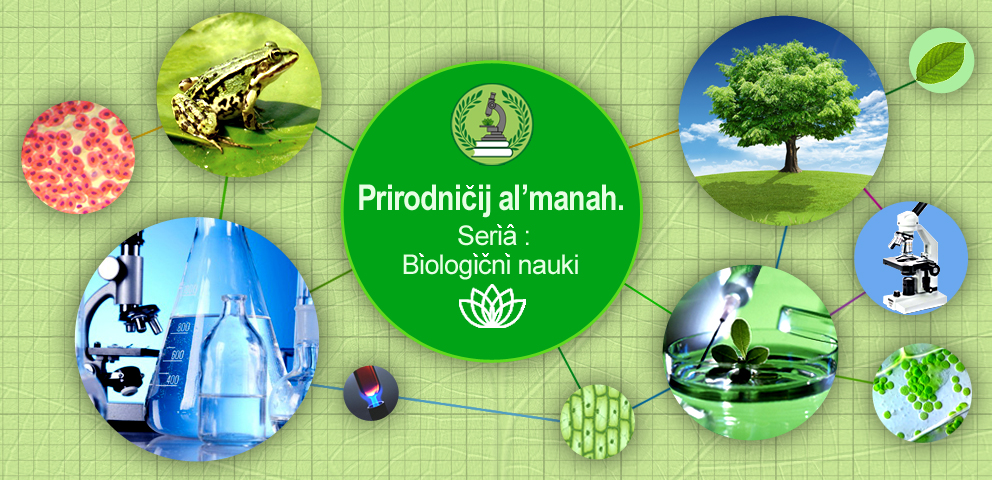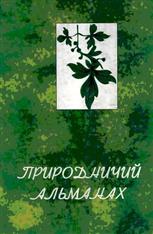DYNAMICS OF THE NUMBER OF THE STEPPER SNAKE VIPERA RENARDI IN THE SOUTH OF THE LEFT BANK OF UKRAINE
Z. V. Selyunina, О. Е. Markautsan, S. V. Dubov
Abstract
The steppe viper (Vipera renardi (= ursinii) Christoph, 1861) is a background species of snakes in the steppe zone of southern left-bank Ukraine. This species is a figurant in the Red Book of Ukraine and is protected in accordance with the Bern Convention. According to the IUCN Red List, Vipera renardi has a Vulnerable species (VU) status, which is assigned to species that are under threat of becoming endangered. Anthropogenic transformation, namely, plowing, afforestation, irrigated agriculture, fires, synanthropization, etc., lead to the fact that in the Black Sea steppe, in the Lower Dnieper arenas of steppe, the viper disappears. This species has been preserved in the protected areas of the region and in the less transformed areas of the coastal and sandy steppe. The study area includes the forest-steppe areas of the Black Sea Biosphere Reserve (BSBR) and the territory of the “Svyatoslav’s Biloberezhzhya” National Nature Park (NNP BS) on the Kinburn Peninsula, the Black Sea areas and the islands of Tendrivska and Yahorlytska Bays, which are part of the Black Sea Biosphere Reserve.
The dynamics of the number of steppe vipers also depends on abiotic factors too. In wetter years and the next 1-2 years, the number of vipers in the region decreases. In dry years, the number of steppe vipers increases. In the last 20 years, according to the results of long-term monitoring, the dynamics of the steppe viper population has a negative trend both in the Black Sea steppe and in the arenas of the Lower Dnieper.The cyclic dynamics of the steppe viper in our region is 3-5 years, the highest amplitude is 1.4 units, the maximum values of the relative abundance over the past 20 years have decreased from 1.5 to 0.4 ind./km, the minimum - from 0.3 to 0,1 ind./km. To preserve the population of this species in the south of the left-bank Ukraine, it is necessary to increase the areas with limited use of natural resources, namely, with the prohibition of plowing, prevention of excessive grazing and exploitation of sand deposits. In
addition, it is required to strengthen environmental education and propaganda among the local population about the need to preserve the steppe viper in natural conditions and change the hypertrophied thought about the danger of this snake. The extensive network of protected areas in the region: reserves, national nature parks, regional landscape parks, protected tracts, etc., contributes to the conservation of this species.
References
2. Даревский ИС. Методы изучения рептилий в заповедниках: В сб. Амфибии и рептилии заповедных территорий. Москва. 1987: 25-32.
3. Котенко ТІ. Розробка критеріїв оцінки стану рідкісних видів як теоретичної основи ведення Червоної книги і вдосконалення заповідної мережі (на прикладі земноводних та плазунів фауни України). Матеріали наук.-практ. семінара «Проблеми охорони видів фауни і флори, занесених до Червоної книги України». Миколаїв: «Ойкумена»; 1992: 84-86.
4. Котенко ТИ. Земноводные и пресмыкающиеся. Вестник зоологии. 1 отд. выпуск «Позвоночные животные Черноморского биосферного заповедника (аннотированные списки видов)». 1996: 16-19.
5. Котенко ТИ, Зиненко АИ, Селюніна ЗВ, Гаврилюк СВ. Степная гадюка Vipera renardi (Christoph, 1861) острова Орлов (Тендровский залив). Природничий альманах. Серія: Біологічні науки. 2012; Вып 18. Херсон: ООО ХГТ, 2013: 39-50.
6. Котенко ТІ, Кукушкін ОВ. Гадюка степова, Vipera renardi (Christ.), – вид Червоної книги України. В зб. «Знахідки тварин Червоної книги України». Київ. 2008:101-132.
7. Коросов АВ. Динамика численности островной популяции обыкновенной гадюки (Vipera berus). Зоологический журнал. 2008; Т.87, № 10: 10-15.
8. Кукушкин ОВ. Vipera renardi Puzanovi ssp. nov. (Reptilia, Serpentes, Viperidae) – новый подвид степной гадюки из горного Крыма. Современная герпетология. 2009; Т.9, вып.1-2:18-40.
9. Лавренко ЕМ. Растительность европейской части СССР. Ленинград, Наука; 1980: 250-254.
10. Руденко ВП, Коваленко ТА, Руденко АГ. Зустріч окремих рідкісних видів хребетних тварин в Національному природному парку «Джарилгацький» (2013-початок 2019). Матеріали до 4-го видання Червоної книги України. Тваринний світ. Серія: «Conservation Biology in Ukraine». Київ: 2019: 7:3: 280–287.
11. Селюніна ЗВ. Сучасний стан герпетофауни Чорноморського біосферного заповідника (1998-2003). Матеріали наукових читань, присвячених 170-річчю каф. зоології КНУ та 100-річчю з дня народження О.Б.Кістяковськогої «Сучасні проблеми зоологічної науки». Канів. Київ:ВПЦ «Київський університет»: 2004: 161-163.
12. Селюніна ЗВ. Плазуни Чорноморського біосферного заповідника в 1990-2005 р. В зб. «Знахідки тварин Червоної книги України». Київ: Ін-т зоології НАНУ. 2008:306-315.
13. Селюнина ЗВ. Результаты мониторинга герпетофауны в Черноморском биосферном заповеднике в 2006-2010 годах. Природничий альманах. Серія: Біологічні науки. 2011;16:138-144.
14. Selyunina ZV, Gavrylyuk SV. Herpetofauna of the Island ecosystems northwestern part of the Black Sea. «Actual problems of protection and sustainable use of the animal world diversity». VIII-th International conference of zoologists. 10-12 oct 2013. Chisinau (Moldova). 2013: 48-50.
15. Селюніна ЗВ. Багаторічна динаміка чисельності плазунів Чорноморського біосферного заповідника, що занесені до Червоної книги України. Праці науково-технічної конференції (с.Урзуф, 16-18 жовтня 2019 року). Серія «Conservation Biology in Ukraine». «Біорізноманіття степової зони України: вивчення, збереження, відтворення» (з нагоди 10-річчя створення національного природного парку «Меотида»). Слов’янськ: Видавництво «Друкарський двір». 2019;13:151-156.
16. Уманец ОЮ. Лесные ценогенетичекие комплексы степной зоны северо-восточного Причерноморья. Вісник Национального науково-природничого музею. Вип.4-5. 2005-2007: Серия ботанична, частина 2. Київ: Фитон. 2007:454-468.
17. Уманець ОЮ. БЗ Чорноморський. Фіторізноманіття заповідників і національних природних парків України. Ч.1. Біосферні заповідники. Природні заповідники. Під ред. В.А.Онищенка і Т.Л.Андрієнко. Київ: Фітосоціоцентр: 2012: 73-93.
18. Червона книга України. Тваринний світ. Під заг. ред. І.А. Акімова. Київ: «Глобалконсалтинг». 2009: 397.
19. Червона книга МСОП. Доступно: https://www.iucnredlist.org/info/categories_criteria1994#categories/
20. Літопис природи Чорноморського біосферного заповідника. 1998-2019 р.

